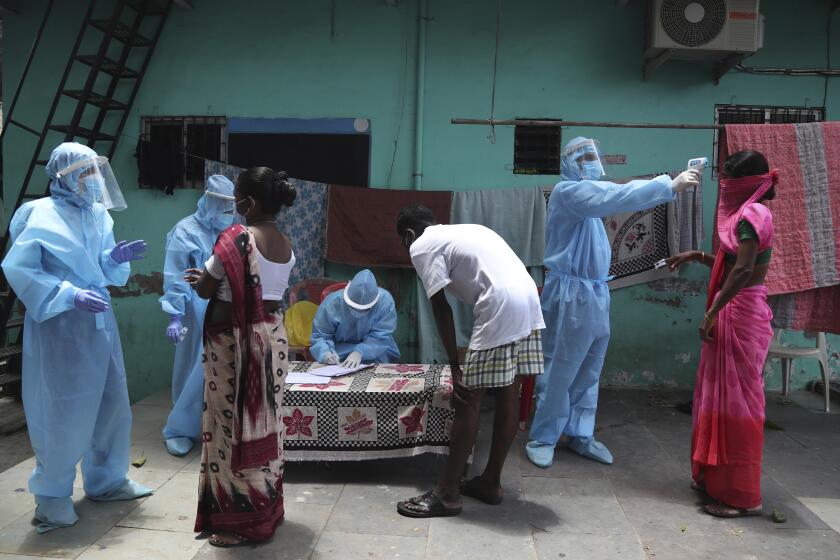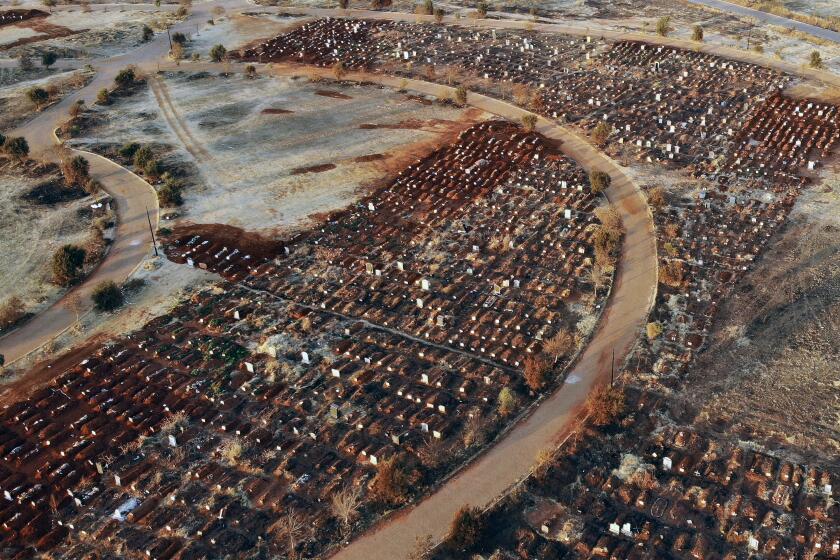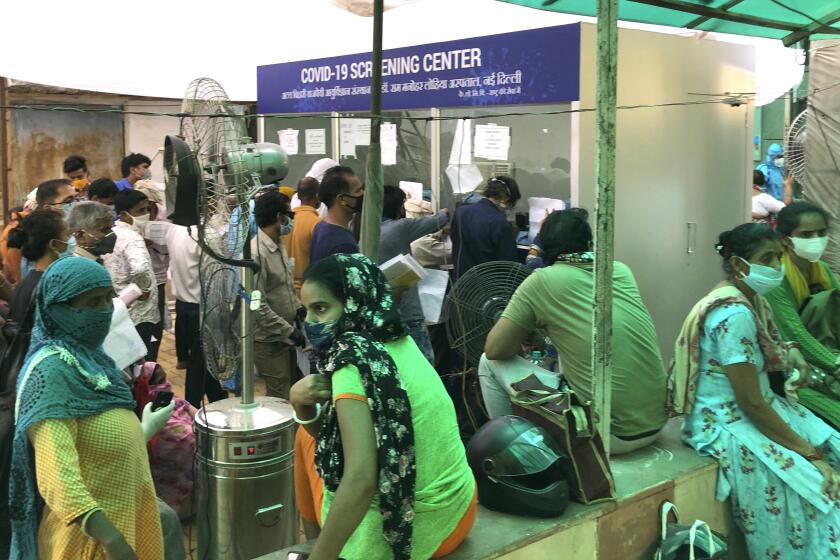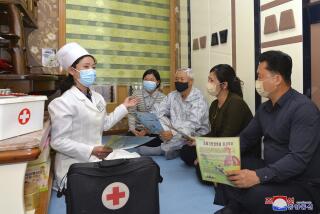India hits 2 million coronavirus cases as health workers go on strike

- Share via
NEW DELHI — As India hit another grim milestone in the coronavirus pandemic Friday, surpassing 2 million cases and 41,000 deaths, community health workers went on strike, complaining that they were ill-equipped to respond to the wave of infection in rural areas.
Although India has maintained comparatively low COVID-19 fatality rates, the disease’s trajectory varies widely across the country, with the burden shifting from cities with relatively robust healthcare systems to rural areas where resources are scarce or nonexistent.
The Health Ministry reported 62,538 cases in the past 24 hours, raising the nation’s total to 2,027,074. Also, 886 people died, for a total of 41,585. The ministry said that recoveries were also growing in number.
India has the third-highest caseload in the world after the United States and Brazil. It has the fifth-most deaths, but its fatality rate of about 2% is far lower than the top two hardest-hit countries. The rate in the U.S. is 3.3% and in Brazil 3.4%, figures from Johns Hopkins University showed.
The caseload in the world’s second-most populous country has quickly expanded since the government began lifting a months-long lockdown in hopes of jump-starting a moribund economy. India is projecting negative economic growth in 2020.
Life cautiously returned to the streets of the capital of New Delhi and financial hub Mumbai, which appear to have passed their peaks.
Mass screenings and quarantines have helped contain the coronavirus in Dharavi, home to 1 million people.
In Mayur Vihar, a neighborhood in east Delhi, shopkeeper and chemist Rajiv Singhal described the daily phone calls he received after testing positive from officials within the Delhi state government, the Delhi police and the federal government to check on his condition.
“Despite our huge population and rampant illiteracy, if we have only 2 million cases so far, it shows that government has played a big role in reducing the spread,” he said.
But state and local governments elsewhere in India were reimposing lockdowns after sharp spikes in cases.
About 900,000 members of an all-female community health workforce began a two-day strike Friday, protesting that they were being roped in to help with contact tracing, personal hygiene drives and in quarantine centers, but were not being given personal protective equipment or additional pay, according to organizer A.R. Sindhu.
Africa’s confirmed coronavirus cases surpass 1 million, but global health experts say the true toll is much higher
The health workers, known as Accredited Social Health Activists, or ASHA, which means “hope” in several Indian languages, have been deployed in each village on behalf of the Health Ministry. Their work includes escorting children to immunization clinics and counseling women on childbirth.
While their regular work hasn’t been reduced, they are increasingly being involved by state governments in the fight against the pandemic, said Sindhu. “ASHA workers don’t have masks or PPEs or even sanitizers,” she said.
She added that, although the work has increased and become more dangerous, their salaries remain static at roughly $27 per month. And the families of at least a dozen women who she said died from COVID-19 didn’t receive compensation from India’s federal insurance for front-line healthcare workers because their causes of death were not recorded as COVID-19.
Manisha Verma, a spokesperson for the Health Ministry, did not immediately respond to a request for comment.
While India’s leaders have promised coronavirus care for all who need it, treatment options are as stratified and unequal as the country itself.
In Mumbai, the capital of central Maharashtra state, cases have plateaued after months of steady growth. But rural parts were seeing an opposite trend.
Dr. S.P. Kalantri, the director of a hospital in the village of Sevagram in Maharashtra, about 46 miles from the city of Nagpur, said younger people were cavalier about social distancing and masks. Fatigue and increased familiarity with the disease, which has been most fatal to Indians over 60 with underlying health problems, had resulted in people not being as vigilant, he said.
“Everyone thinks it won’t be them,” he said.
As in much of the rest of the world, many Indians appeared to be counting on a therapeutic treatment or a vaccine to contain the spread of the disease.
India has launched two of the world’s dozen-and-a-half prospective vaccines into human trials, with vaccine maker Zydus Cadila announcing that it had completed Phase 1 trials of its DNA-based vaccine on Thursday.
The country will be vital to global vaccination efforts, regardless of whether its own attempts work. The world’s largest vaccine maker, the Serum Institute in the central Indian city of Pune, has ramped up capacity to manufacture as many as a billion doses in development by AstraZeneca and the University of Oxford, which is in Phase 2 trials in India and England, and Phase 3 trials in Brazil and South Africa.
Researchers are hoping to launch the Oxford vaccine for emergency use by October.
More to Read
Sign up for Essential California
The most important California stories and recommendations in your inbox every morning.
You may occasionally receive promotional content from the Los Angeles Times.
















